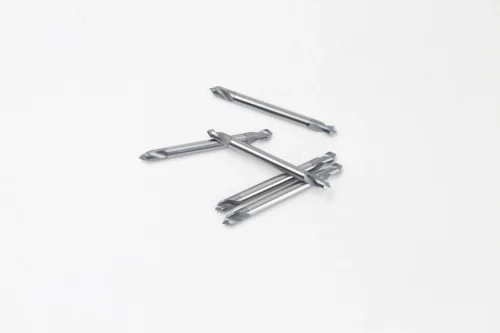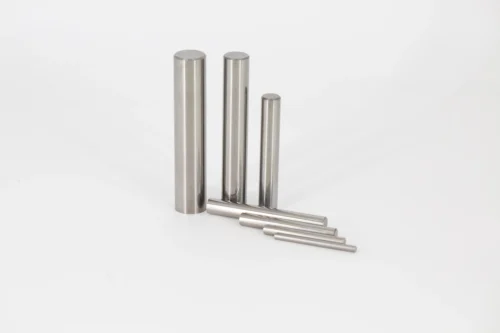What are Cemented Carbide Blanks?
Carbide Rod Blanks are semi-finished materials made of tungsten carbide blanks and metal binders such as cobalt through powder metallurgy.
This type of material is known for its extremely high hardness, wear resistance and corrosion resistance, and is widely used in mechanical processing, mold manufacturing, mining tools and other fields.

What is the difference between carbide blank round rods and finished round rods?
1. Material and processing stage
Cemented Carbide Blanks are primary forms without fine grinding, with a rough surface but retaining a high-density base material for subsequent customized processing.
Finished Rods are precision ground and coated and can be directly used in high-precision equipment.
2. Usage scenarios and advantages
Blank round rods: lower cost, suitable for customers who need secondary processing (such as cutting, welding), and higher flexibility.
Finished round rods: plug and play, save time, but the unit price is higher.
3. Performance characteristics
The original structure of the blank product (Hardmetal Blanks) can better adapt to extreme working conditions (such as high temperature and high pressure), while the finished product is better in surface finish and dimensional accuracy.

Why choose a professional tungsten carbide supplier?
1. Technical guarantee:
High-quality suppliers ensure uniform density and no internal defects of tungsten carbide through strict sintering process control.
2. Customized service:
Rough products can provide different diameters, lengths and composition ratios (such as cobalt content 6%-15%) according to demand.
3. Cost optimization:
Reducing intermediate processing links and directly purchasing rough products can reduce production costs by 20%-30%.

How to choose the cobalt content of cemented carbide according to processing requirements?
The performance of cemented carbide is closely related to its cobalt (Co) content. Cobalt, as a binder, directly affects the hardness, toughness, wear resistance and impact resistance of the material. The following are the key considerations for selecting the cobalt content:
1. Processing material type
High-hardness materials (such as hardened steel, titanium alloy):
Choose carbide with low cobalt content (6%-8%). Low cobalt ratio increases the density of tungsten carbide, enhances hardness and wear resistance, and is suitable for finishing or high wear resistance scenarios.
Material with high toughness requirements (such as cast iron, stainless steel):
Use carbide with medium-to-high cobalt content (10%-15%). Higher cobalt content improves material toughness, reduces the risk of cutting edge chipping, and adapts to intermittent cutting or high impact conditions.
2. Processing conditions and loads
High temperature or high pressure environment:
Low cobalt carbide is more resistant to high temperature softening due to its high hardness, but severe impact should be avoided.
High impact or vibration load:
High cobalt content (≥12%) can absorb more impact energy and extend tool life by enhancing the strength of the bonding phase.

Cemented Carbide with the high hardness of tungsten carbide and the toughness of cobalt as its core, has become an irreplaceable “performance cornerstone” for industrial manufacturing.
Whether it is the flexible processing advantage of carbide blanks or the precise adaptation of cobalt content (6%-15%), its essence lies in balancing efficiency and cost, matching scenarios and performance.
Choosing a professional tungsten carbide supplier can not only obtain high-density defect-free blank substrates, but also achieve the dual goals of increasing tool life by more than 30% and reducing production costs by 20%-30% through customized cobalt ratio solutions.
